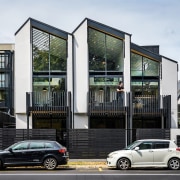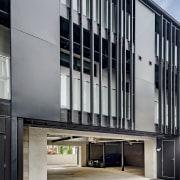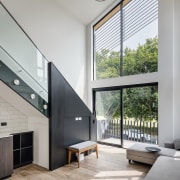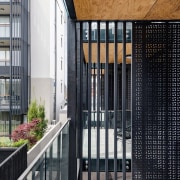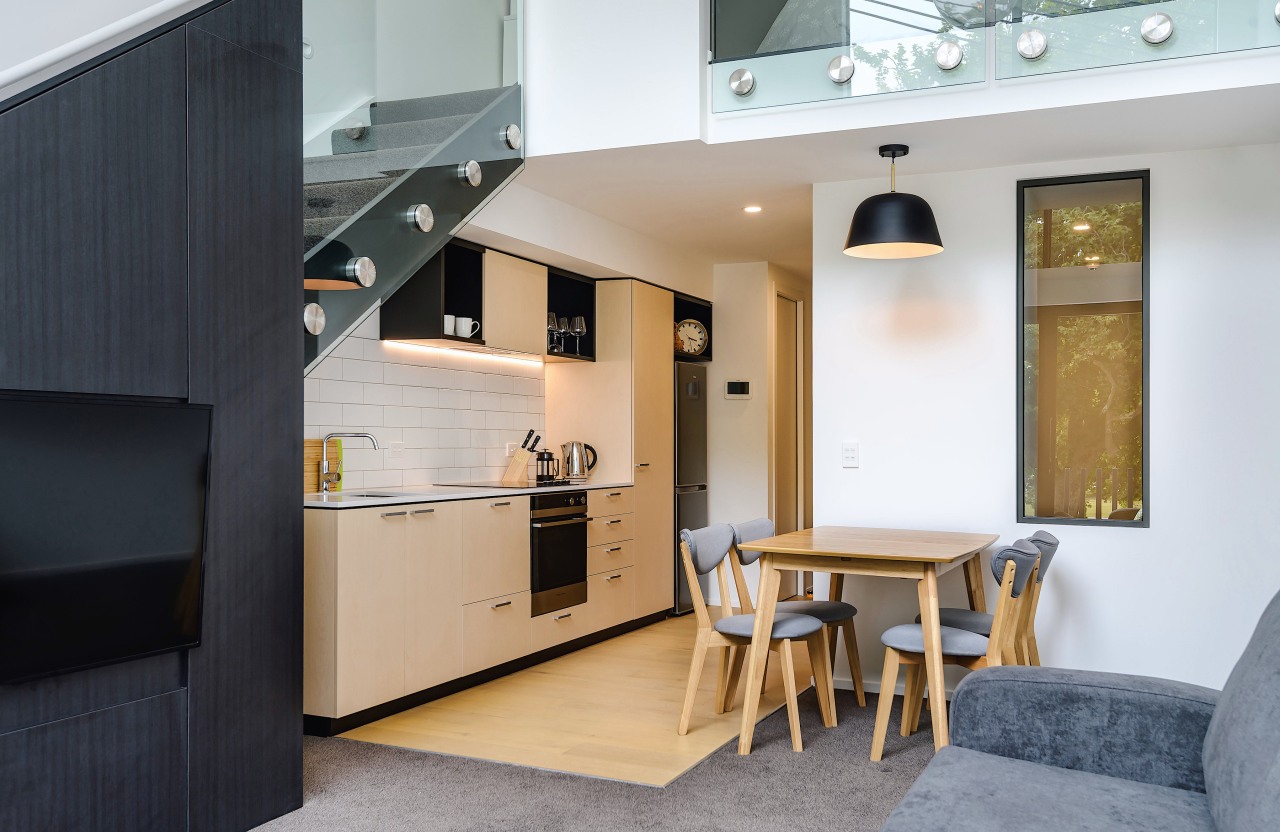Understated and in keeping
Fourteen units discreetly knitted together on a close inner-city site – Juno Apartments, by Stufkens+Chambers Architects, conceals its density in several ways
Designed by Stufkens+Chambers Architects
From the architects:
Project description
Positioned adjacent to a park setting of a mature stand of trees and a medium density gabled urban vernacular, this site was to be occupied with apartment living that responded to the natural setting of Cranmer Square.
Design features and creative solutions
The resulting street profile was inspired by the surrounding historic and contemporary gable forms, allowing us to sculpt a façade that played with massing and transparency while creating subtle folds and angles that create shadow movement throughout the day.
The offset gables to the street façade were used to create a sense of an extension skyward to reflect the scale of the trees opposite and continue the rhythm of the streetscape.
Plywood soffits add a simple punch of natural timber colour to the overall restrained palette.
Large picture windows to the street capture and draw you towards the park setting of Cranmer Square which – by extension – helps increase and enrich the sense of depth and spaciousness.
The purposeful scale of glazing provided reflections to reference the adjacent treescape – the interface with the street is further enhanced through the balcony porosity while still maintaining privacy between adjacent units.
The major moves of the design can be understood as responses to the limited dimensions of the site, purposely subduing the massing of 14 units which are successfully concealed and hidden from the street and arranged in two blocks with separate north and west orientations.
Car parking is secured under the rear block of units and accessed via a side lane.
Secure automated pedestrian flow is also accessed from the adjacent lane.
This project involved the careful consideration of energy consumption and environmental impacts alongside human experience and comfort.
We strived for the right balance of low impact and high experience.
Our design purposely included the selection of locally manufactured products, both supporting the local economy and reducing the impact of transport emissions.
We also limited ourselves to using timber framing only – a way to keep to low embodied energy materials.
The use of green means of transport in preference to car travel is encouraged with a generous covered cycle storage area.
The internal spatial design reflects efficient use of space heating/lighting, low VOC paint/carpet and natural ventilation.
Simple techniques are; orientation of spaces to facilitate maximising natural light and creating solar gain deep into the living areas and units with mezzanine levels.
Façade treatment incorporates deep recesses, horizontal slats and balcony overhangs providing shading and so reducing reliance on mechanical ventilation.
The project is a medium sized build – this was important to the owner as their brief required an apartment block that minimised impact, or footprint, on the environment.
The aim was to create a building that engages with the existing environment and that will age gracefully over time – but without compromise on low life-cycle costs and maintenance.
Challenges included the narrow site constraints and the owner’s density requirements.
The narrow main view shaft out to the park provided the street profile while the established western shared boundary picture framed openings to an adjacent apartment’s outdoor common area, providing access to a northern orientation for the rear block.
Credit list
Architect
Interior architecture
Awards
Structural engineer
Builder
Designed by: Stufkens+Chambers Architects
Story by: Trendsideas
Photography by: Anthony Turnham Photography
Home kitchen bathroom commercial design


